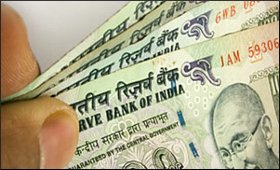|
|
|

|
ECLGS 2.0 enough to fund cash-flow drop of pandemic-hit firms
|
|

|
|
| Top Stories |
 |
|
|
|
SME Times News Bureau | 30 Nov, 2020
The Emergency Credit Line Guarantee Scheme (ECLGS 2.0), extended under
the Aatmanirbhar Bharat 3.0 to eligible companies in 26 stressed sectors
identified by the K.V. Kamath Committee, and also to the healthcare
sector, can potentially infuse Rs 40,000 crore liquidity for rated
eligible companies, global Analytics firm Crisil said.
According
to a study by the rating agency, this liquidity will be sufficient to
help companies, including those hit by a sharp decline in cash flows
because of the pandemic, to overcome liquidity pressures.
Under
ECLGS 2.0, companies with outstanding loans of between Rs 50 crore and
Rs 500 crore are eligible for additional credit of up to 20 per cent of
their outstanding debt as on February 29, 2020. The tenure of such
additional credit will be 5 years, including a one-year moratorium on
principal repayment.
Out of CRISIL's rated portfolio, 1,414
companies from 27 sectors, including healthcare, were found eligible for
ECLGS 2.0. Their total outstanding debt stood at Rs 2 lakh crore as on
February 29, 2020.
Further, this assumes that all eligible companies will avail of the entire fund-based debt facility available under the scheme.
The
study indicates that ECLGS 2.0 can be a significant source of liquidity
for sample set given the average cash flow of these companies is seen
contracting 17 per cent, or by Rs 11,000 crore, compared with the
pre-pandemic assessment for the current fiscal.
Subodh Rai,
Senior Director, CRISIL Ratings, said: "Borrowing under the ECLGS 2.0
scheme can provide additional liquidity equal to 3.5 times the cash-flow
contraction for the sample set. This will help them overcome temporary
liquidity challenges. Also, the one-year moratorium available under the
scheme will provide further room for companies to stabilise their cash
flows."
The scheme will particularly benefit companies in
low-resilience sectors such as hotels, gems and jewellery, travel, and
real estate, as their accruals are expected to fall sharper at 23 pet
cent this fiscal. For these sectors, the additional liquidity afforded
by the scheme will be much higher at almost 10 times of cash flow
decline.
Companies in high-resilience sectors such as dairy,
information technology, FMCG, chemicals, and pharmaceuticals are seen
less impacted, with the decline in their cash flow restricted to 10 per
cent. They, too, will benefit from ECLGS 2.0, with additional liquidity
being created of about 5 times of cash flow contraction. Several other
sectors such as textiles and steel, which are debt-heavy, will also have
similar additional liquidity against cash flow decline.
However,
the benefits to individual companies may sharply vary depending upon
the loan outstanding on the cut-off date and lenders' willingness to
extend credit to specific borrowers.
With the business
environment continuing to evolve, the pandemic's trajectory and
attendant containment measures will be the key monitorable.
|
|
|
| |
|
|
|
|
|
|
|
|
|
|
|
|
|
|
| |
| Customs Exchange Rates |
| Currency |
Import |
Export |
US Dollar
|
₹91.25
|
₹89.55 |
UK Pound
|
₹122.85
|
₹118.85 |
Euro
|
₹107.95
|
₹104.3 |
| Japanese
Yen |
₹59 |
₹57.1 |
| As on 29 Dec, 2025 |
|
|
| Daily Poll |
 |
 |
| What is your biggest hurdle to scaling right now? |
|
|
|
|
|
| Commented Stories |
 |
|
|
|
|
|
| |
|